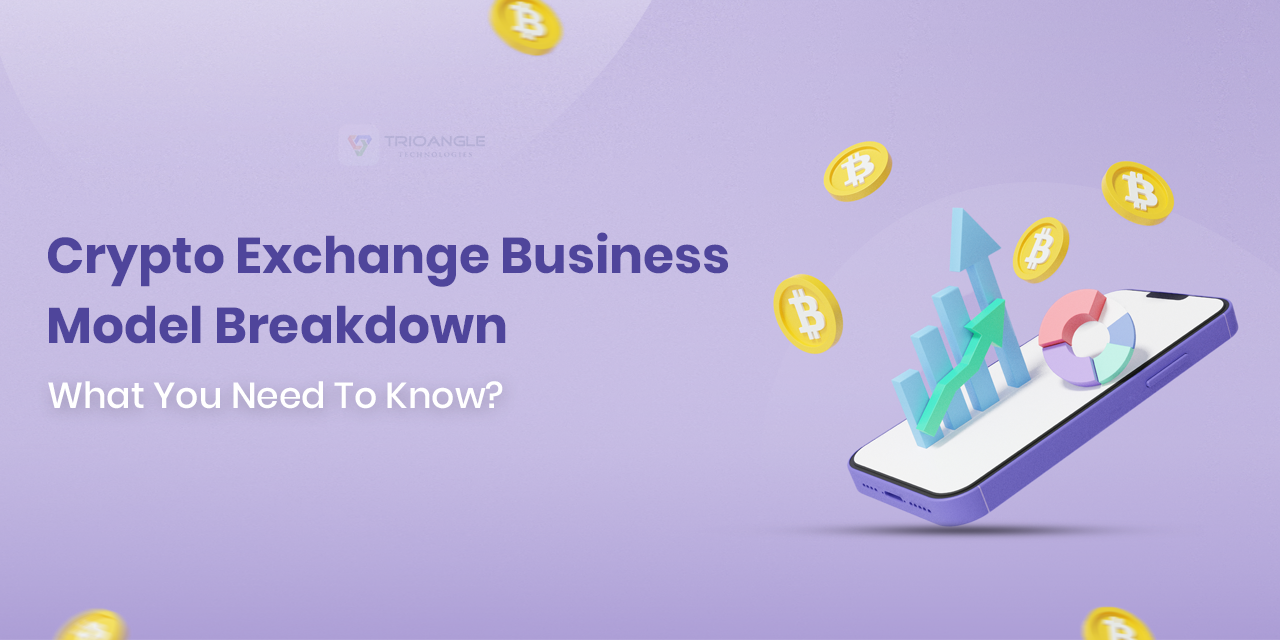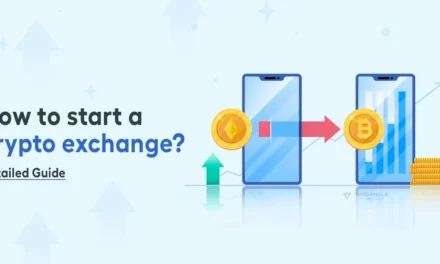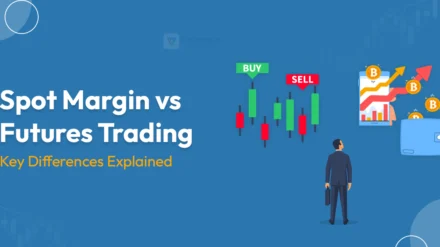As 2020 came to a close, the cryptocurrency market saw an incredible boom. The price of Bitcoin soared past its previous record high, breaking the $20,000 mark, capturing the attention of investors worldwide. Amidst all this excitement one of the top exchanges called Coinbase faced a major setback. Their system struggled to handle the huge amount of traffic. As a result, many users found themselves locked out of their accounts at crucial trading moments. Despite being a leading exchange, its crypto exchange business model and infrastructure failed to manage an unexpected surge in demand highlighted the weaknesses that can plague even the most established platforms under pressure.
The situation caused temporary frustration for many traders and raised significant questions about the reliability and resilience of cryptocurrency exchange development. Behind every successful exchange is a carefully crafted business model that must withstand unexpected challenges such as server outages, liquidity issues, or regulatory restrictions.
This real-life scenario emphasizes the need to build a robust crypto exchange business model that can handle rapid growth, provide seamless user experiences, and remain adaptable to an ever-changing market. Whether you’re thinking about starting your own exchange or just want to understand the fundamentals, understanding how exchanges are structured is important to long-term success.
Let’s break down the elements of the crypto exchange business model into 9 key criteria across 4 main categories, giving you a complete insight into how these platforms actually work!
Crypto Exchange Business Model
The cryptocurrency exchange business model is divided into four main areas such offerings, customers, infrastructure, and finances. Each of these areas is described in nine specific standards that together form a solid foundation for a successful, scalable, and sustainable cryptocurrency exchange platform.
- Offerings And Proposals
This essential section explores the benefits your cryptocurrency exchange offers to its users. Value is determined by the specific audience your business aims to reach and serve in the market.
Crypto exchange value propositions
Every successful exchange brings its own unique benefits. You might think that this is why customers choose us over competitors. These value propositions are truly at the heart of our platform.
Here are some examples of our value propositions:
- Liquidity
We help large transactions execute smoothly without any price fluctuations. Platforms like Binance and Coinbase really shine in this area.
- Security
We focus on strong security measures, including cold storage and biometric authentication, to keep your assets safe.
- Variety
We offer more than just Bitcoin or Ethereum. Our platform features a wide range of altcoins, tokens, and DeFi assets.
- Speed and Performance
Experience fast order matching, low-latency trading, and minimal downtime for a seamless experience.
- User-centricity
Our intuitive UI/UX, user-friendly mobile apps, and educational resources are ideal for those new to the world of cryptocurrency.
What is our ultimate goal? To create benefits for users and build trust in a market that can often feel unpredictable and volatile.
- Customers: Right User Targeting!
This section focuses entirely on how you interact with your customers, the platforms they use, and the context in which they use it. It is divided into three main components: customer segment, channel, and customer relationship.
Customer Segments
Cryptocurrency exchanges serve a wide variety of users, and knowing your audience segments is key to effectively designing your services.
- Retail investors
These are everyday people who want to buy, sell, or trade as part of their investment journey.
- Institutional clients
Think hedge funds, family offices, and wealthy traders who need specialized APIs and over-the-counter (OTC) services.
- Token initiative
These are all upcoming projects about launching and promoting their tokens.
- Traders and developers
This group includes fast-paced traders, liquidity providers, and builders of automated systems, all whom value fast execution and easy API access.
Channels
The tactics used to attract and engage these users include:
- Social Media & Influencer Campaigns
Using influencers on platforms like TikTok, YouTube, and Twitter to bring in new retail users.
- SEO/Content Marketing
Creating articles, reports, and guides that educate and drive organic traffic.
- Affiliate Programs & Referrals
Offering rewards to users for bringing their friends.
- Community Development
Using channels like Telegram and Discord to keep users engaged and build loyalty.
The core of your exchange is the connections you make with your users. If support is lacking, it can lead to negative reviews and a decline in your user base.
Customer Relationship
Here are some great ways to strengthen those relationships:
- 24/7 customer support
Providing quick, multilingual help can reduce user frustration.
- Rewarding loyalty programs
Incentivize users with points, levels, and attractive rewards that keep them coming back.
- Educational resources
Provide online workshops, how-to guides, and demo accounts to help beginners get started.
- Social feedback channels
Make it a key goal to collect and use user feedback for continuous improvements and updates.
- Infrastructure: Tech Backbone
This part of infrastructure includes everything you need to run your cryptocurrency exchange successfully. We’re talking about partnerships, your team, the processes in place, and the technology you rely on. It includes essential resources, core functions, and key collaborators that are important to your business.
Key Resources
Running a cryptocurrency exchange is more than just building an impressive app. Here’s what you really need:
- Technical infrastructure
You’ll need reliable servers, real-time data processing, efficient trading systems, and robust databases to keep everything running smoothly.
- Security measures
Protecting user data and assets is important. This means you need to protect against DDoS attacks and use full encryption to keep everything safe.
- Legal and compliance experts
These people are crucial to helping you navigate the ever-changing world of regulations.
- Blockchain Integration
It’s important to make sure you can easily communicate with different blockchains for deposits and withdrawals.
Key Activities
- Platform Maintenance and Development
Make constant working on improvements and releasing new features.
- Liquidity Oversight
We collaborate with liquidity providers and use our internal mechanisms to ensure our order book is stable.
- Security Updates
We conduct regular penetration tests, provide vulnerability assessments, and conduct thorough assessments.
- KYC/AML Enforcement
Our registration solutions verify identities while ensuring a smooth and hassle-free user experience.
Key Partners
- Liquidity Providers
These are companies or market makers that help users buy and sell easily.
- Payment Gateway Providers
They act as fiat entry and exit points, making deposits and withdrawals a breeze.
- Regulatory Advisor
Stay up-to-date on the latest laws in various regions to stay compliant.
- Marketing and PR firms
They help increase visibility and improve our brand reputation.
- White-label solution providers
Ideal for those who want to hit the ground running with ready-made solutions.
- Finances: Cost Manage And Making Revenue
The crypto exchange business model section of finance breaks down the costs involved in starting your cryptocurrency exchange and the potential profits it can bring. This section is divided into two main parts: cost structure and revenue streams.
Cost Structure
Key costs are broken down into several key areas:
- Technical Development
This includes hiring developers, building compatible engines, mobile apps, wallets, and APIs.
- Server & Cloud Infrastructure
Fast, reliable, and secure hosting solutions.
- Regulatory Licensing
This includes obtaining licenses or similar legal protections for money exchanges.
- Security Measures
Regular assessments, ethical hacking efforts, and system upgrades are essential.
- User Acquisition
This includes costs for paid advertising, influencer collaborations, and affiliate networks.
Revenue Model
This is where the magic and money come into play:
- Trading Costs
These are charged for each transaction, usually a small percentage of the total trade.
- Withdrawal Fees
These fees apply when users move their funds off the platform.
- Listing Fees
These costs are incurred by projects that want to list their tokens.
- Premium Offers
These include options for API access, advanced analytics, or margin trading.
- IEO/IDO Commissions
Help launch new tokens and get a share of the profits.
- Staking Services & Lending
These offer opportunities for passive income with platform fees.
Closing Thoughts
The challenges faced by exchanges like Coinbase in 2020 have highlighted an important lesson. While the market can experience explosive growth, the lack of a solid infrastructure can lead to a rapid decline. Every crypto exchange operates within a dynamic environment, which necessitates a crypto exchange business model that is flexible, resilient, and can handle high volumes with minimal disruption.
This is where partnering with a trusted cryptocurrency exchange development company really makes a difference. Their knowledge can guide you in building a platform that is secure and scalable, but well-designed to meet the ever-changing needs of the market.
If you’re aiming to launch or expand a crypto exchange, understanding these crypto exchange business model’s 9 essential criteria across 4 major categories is important to not only surviving, but truly thriving. These guidelines will help you build a strong platform and navigate the rapidly changing and highly competitive cryptocurrency world.








